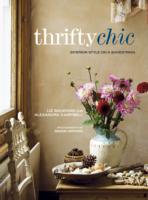- ホーム
- > 洋書
- > 英文書
- > History / World
Full Description
A wide-ranging and varied collection of essays which examine surviving garments, methods of production and clothes in society.
The second decade of this acclaimed and popular series begins with a volume that will be essential reading for historians and re-enactors alike. Two papers consider cloth manufacture in the early medieval period: Ingvild Øye examines the graves of prosperous Viking Age women from Western Norway which contained both textile-making tools and the remains of cloth, considering the relationship between the two. Karen Nicholson compliments this with practical experiments in spinning. This is followed by Tina Anderlini's close examination of the details of cut and construction of a thirteenth-century chemise attributed to King Louis IX of France (St Louis), out of its shrine for the firsttime since 1970.
Three papers consider fashionable clothing and morality: Sarah-Grace Heller discusses sumptuary legislation from Angevin Sicily in the 1290s which sought to restrict men's dress at a time when preparation for war was more important than showy clothes; Cordelia Warr examines the dire consequences of a woman dressing extravagantly as portrayed in a fourteenth-century Italian fresco; and Emily Rozier discusses the extremes of dress attributed by moral and satirical writers to the men known as "galaunts". Two textual studies then show the importance of textiles in daily life. Susan Powell reveals the austere but magnificent purchases made on behalf of Lady Margaret Beaufort, mother of King Henry VII, in the last ten years of her life (1498-1509); Anna Riehl Bertolet discusses in detail the passage in Shakespeare's A Midsummer Night's Dream where Helena passionately recalls sewinga sampler with Hermia when they were young and still bosom friends.
Contents
Production, Quality, and Social Status in Viking Age Dress: Three Cases from Western Norway - Ingvild Oye
The Effect of Spindle Whorl Design on Wool Thread Production: A Practical Experiment Based on Examples from Eighth-Century Denmark - Karen Nicholson
The Shirt Attributed to St. Louis - Tina Anderlini
Angevin-Sicilian Sumptuary Statutes of the 1290s: Fashion in the Thirteenth-Century Mediterranean - Sarah-Grace Heller
The Devil on My Tail: Clothing and Visual Culture in the Camposanto Last Judgment - Cordelia Warr
"Transposing þe shapus þat God first mad them of": Manipulated Masculinity in the Galaunt Tradition - Emily J. Rozier
Textiles and Dress in the Household Papers of Lady Margaret Beaufort (1443-1509), Mother of King Henry VII - Susan Powell
"Like two artificial gods": Needlework and Female Bonding in A Midsummer Night's Dream - Anna Riehl Bertolet








